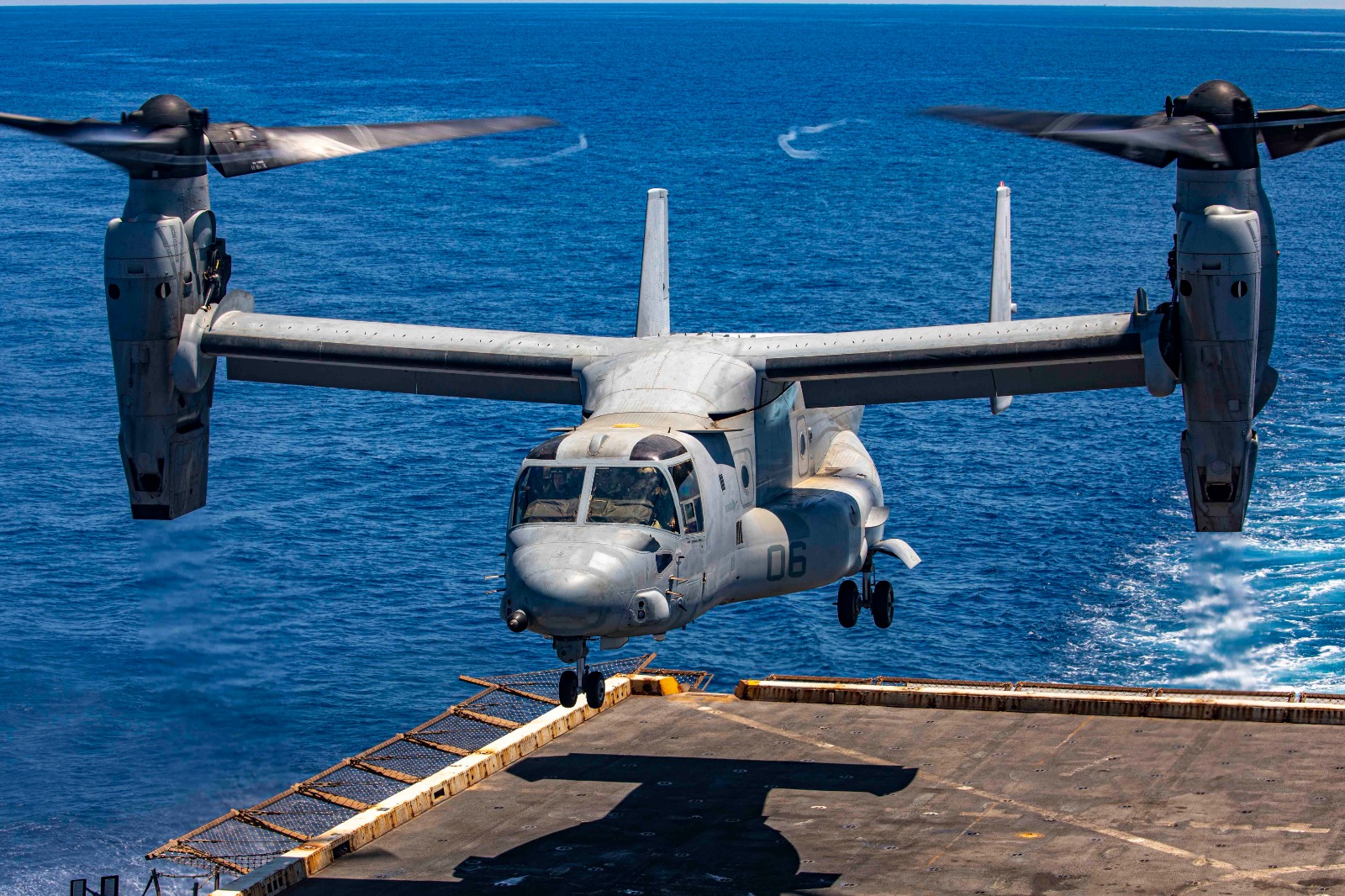To the extent that most people who aren’t vertical-lift pilots have heard of VRS, it’s probably in the context of the Bell-Boeing V-22 Osprey tiltrotor. In April 2000, one of the first Ospreys delivered to the U.S. Marine Corps crashed while on approach to land near Marana, Arizona, killing all 19 people on board. The investigation determined that the aircraft encountered a VRS condition in which one of its two proprotors lost the ability to generate sufficient thrust; the resulting asymmetry flipped the Osprey upside down before it impacted the ground.
VRS occurs when the velocity of air flowing up through one or more rotors of an aircraft approaches the velocity of the downward airflow created by the rotor itself. That usually happens when an aircraft is descending at slower forward airspeeds on approach, and can be aggravated by sudden tailwinds and updrafts, such as occur in the mountains and around tall buildings. The rotor wake collapses into a chaotic vortex that displaces the clean air a rotor needs to create the necessary thrust.
Related: Batteries are a looming certification challenge for electric aviation hopefuls
Because VRS often occurs close to the ground, pilots usually have limited time and altitude in which to recover. Although the Osprey crash near Marana is probably the best-known VRS accident, such mishaps are not uncommon in the helicopter industry. A quick search of the U.S. National Transportation Safety Board’s database alone yields almost 100 accidents over the past 30 years in which VRS may have played a role.
Richard Brown of UK-based Sophrodyne Aerospace is an aerodynamicist whose early career work helped illuminate the circumstances of the Marana V-22 crash. He has since developed a simulation environment for modeling the dynamics of rotor wake in a way that captures the complexities of the VRS condition, and is now using it to analyze a new generation of eVTOL aircraft. The early results aren’t wholly encouraging.
According to a paper presented by Brown at the European Rotorcraft Forum on Sept. 8, eVTOL aircraft may actually be more susceptible to VRS than conventional helicopters. That’s mostly because of disc loading, which is defined as the weight of the aircraft divided by the total area of its lifting rotors. The size of the flight envelope affected by VRS scales directly with disc loading, and eVTOL aircraft — with multiple smaller lifting propellers — typically have much higher disc loadings than helicopters. That means they could encounter VRS at higher airspeeds than similarly sized helicopters, constraining their maneuverability and ability to operate in gusty conditions.
Subscribe to TACThere may be other contributing factors, depending on the model. Most eVTOL developers are designing their propeller blades for maximum efficiency in cruise flight and minimum noise in a hover. That may lead them toward high blade twist and certain acoustically favorable blade tip shapes, but Brown points out that both can exacerbate the VRS condition. Distributed electric propulsion also favors multiple closely spaced lifting propellers, the wakes of which could interact in ways that make VRS more likely. Meanwhile, designs with broadly separated side-by-side propellers may be prone to the same type of asymmetric VRS that plagued the V-22.
Brown is careful to emphasize that not all eVTOL models will be susceptible to VRS to the same degree, and that the condition is not necessarily a deal-breaker for the emerging advanced air mobility industry. But his work does have implications for eVTOL design, and for the approach profiles that electric air taxis will need to fly in order to operate safely. These profiles will need to be factored into the design of landing infrastructure for eVTOLs, especially city vertiports surrounded by tall buildings.
It’s worth noting that existing certification standards for helicopters don’t have much to say about VRS, as the problem has largely been handed off to operators. Whether regulators will take the same approach for eVTOL aircraft remains to be seen. Either way, VRS is a risk that electric air taxi developers should be taking seriously.
Just as the Marana crash made many Marines wary of flying on the V-22, a VRS accident in urban air mobility operations could be a major setback for the emerging industry. No accident is a good thing, but an aircraft falling out of the sky for reasons only an aerodynamicist can explain has a special way of destroying public confidence.
Write to Elan Head at elan@theaircurrent.com
Subscribe to Continue Reading
Our award-winning aerospace reporting combines the highest standards of journalism with the level of technical detail and rigor expected by a sophisticated industry audience.
- Exclusive reporting and analysis on the strategy and technology of flying
- Full access to our archive of industry intelligence
- We respect your time; everything we publish earns your attention


